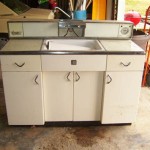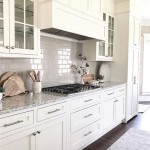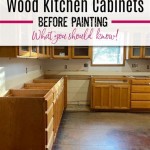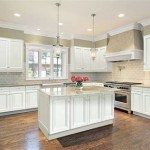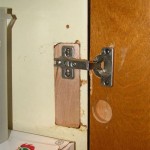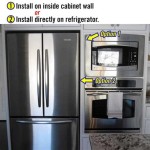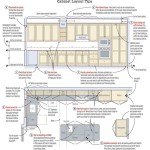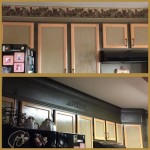Kitchen Cabinet Pull Out Shelf Hardware: A Comprehensive Guide
Kitchen cabinet pull out shelf hardware represents a significant upgrade for any kitchen, offering enhanced accessibility, organization, and overall functionality. Replacing static shelves with pull-out alternatives transforms the usability of cabinets, particularly in areas that are typically hard to reach, such as the back of base cabinets or under sinks. This article provides a detailed examination of the various types of pull-out shelf hardware available, factors to consider when selecting the right hardware, installation procedures, and maintenance tips.
Understanding the Variety of Pull-Out Shelf Hardware
The market offers a diverse range of pull-out shelf hardware, each designed to cater to specific needs and cabinet configurations. Understanding these different types is crucial for selecting the appropriate hardware for a given kitchen improvement project. The primary options commonly encountered include: standard pull-out shelves, tiered pull-out shelves, soft-close pull-out shelves, and specialized pull-out systems.
Standard pull-out shelves are the most basic and widely used type. They consist of a shelf mounted on a pair of slides that allow the shelf to extend outwards from the cabinet. These shelves are generally made of wood, wire, or metal and are available in various sizes to fit different cabinet dimensions. Standard pull-out shelves provide a simple and effective way to access items stored deep within cabinets, making them ideal for storing pots, pans, and other bulky items.
Tiered pull-out shelves, also known as multi-tiered pull-outs, feature two or more shelves stacked vertically. This design maximizes storage space within a cabinet by allowing for the organization of items of varying heights. Tiered shelves are particularly useful for storing spice jars, canned goods, or cleaning supplies. The vertical arrangement ensures that all items are easily visible and accessible, eliminating the need to rummage through piles of clutter.
Soft-close pull-out shelves incorporate a damping mechanism that prevents the shelf from slamming shut. This mechanism ensures a smooth and quiet closing action, reducing noise and preventing damage to the cabinet and its contents. Soft-close functionality is particularly desirable in high-end kitchens or in homes with small children or individuals sensitive to noise. The added convenience and protection offered by soft-close hardware significantly enhance the overall user experience.
Specialized pull-out systems are designed for specific purposes, such as storing trash cans, recycling bins, or kitchen utensils. These systems often include custom-designed components that optimize storage and functionality. For example, a pull-out trash can system typically includes a frame that holds one or more trash cans and a sliding mechanism that allows the cans to be easily accessed and concealed. Specialized pull-out systems provide a tailored solution for addressing specific storage challenges in the kitchen.
Key Considerations When Selecting Pull-Out Shelf Hardware
Several factors must be considered when selecting pull-out shelf hardware to ensure optimal performance and longevity. These factors include: cabinet dimensions, weight capacity, slide type, material, and installation requirements. A thorough assessment of these factors will help to avoid common pitfalls and ensure that the selected hardware meets the specific needs of the kitchen.
Cabinet dimensions are perhaps the most critical factor to consider. Before purchasing any hardware, precise measurements of the cabinet's interior width, depth, and height must be taken. The pull-out shelf must fit snugly within the cabinet without rubbing against the sides or interfering with the door. Furthermore, the shelf's depth should be chosen to maximize storage space while allowing the cabinet door to close properly. A slight discrepancy in measurements can render even the highest-quality hardware unusable.
Weight capacity refers to the maximum weight that the pull-out shelf can safely support. This is particularly important for storing heavy items such as pots, pans, or canned goods. Exceeding the weight capacity can damage the slides, causing the shelf to sag or even collapse. The weight capacity of the pull-out shelf should be clearly stated by the manufacturer, and it is generally advisable to choose a shelf with a weight capacity that exceeds the anticipated load.
Slide type refers to the mechanism that allows the shelf to extend and retract. The most common types of slides are ball-bearing slides and roller slides. Ball-bearing slides offer a smoother and more durable performance compared to roller slides. They typically have a higher weight capacity and are less prone to wear and tear. Roller slides, on the other hand, are less expensive but may not be as durable or smooth. The choice between ball-bearing slides and roller slides depends on the budget, the anticipated load, and the desired level of performance.
The material of the pull-out shelf and its hardware also plays a significant role in its durability and aesthetics. Common materials include wood, wire, and metal. Wooden shelves offer a classic and aesthetically pleasing look, but they may be more susceptible to moisture damage. Wire shelves are lightweight and allow for good air circulation, but they may not be as strong as wooden or metal shelves. Metal shelves are durable and easy to clean, but they may not be as aesthetically pleasing as wooden shelves. The choice of material should be based on the desired aesthetic, the anticipated usage, and the budget.
Installation requirements also need to be considered. Some pull-out shelf hardware requires professional installation, while others can be installed by a DIY enthusiast. The ease of installation depends on the complexity of the hardware and the skill level of the installer. It is crucial to carefully review the installation instructions before purchasing any hardware to ensure that the installation process is manageable. If the installation seems too complex, it may be advisable to hire a professional installer.
Installation and Maintenance of Pull-Out Shelf Hardware
Proper installation and regular maintenance are essential for ensuring the longevity and optimal performance of pull-out shelf hardware. The installation process typically involves attaching the slides to the cabinet walls and then attaching the shelf to the slides. Maintenance primarily consists of cleaning the slides and shelves regularly and lubricating the slides as needed.
The installation process begins with carefully measuring and marking the locations for the slides on the cabinet walls. The slides should be positioned so that the shelf will be level and aligned with the cabinet door. After marking the locations, the slides are attached to the cabinet walls using screws. It is crucial to use the correct size screws and to avoid over-tightening them, as this can damage the cabinet walls. Once the slides are securely attached, the shelf is attached to the slides. The shelf should be carefully aligned with the slides to ensure smooth operation.
Regular cleaning is essential for preventing the accumulation of dust, dirt, and debris on the slides and shelves. The slides can be cleaned using a damp cloth and a mild detergent. Avoid using harsh chemicals or abrasive cleaners, as these can damage the slides. The shelves can be cleaned using a similar method, depending on the material of the shelves. Wooden shelves may require special cleaning products to prevent moisture damage.
Lubricating the slides periodically can help to ensure smooth and quiet operation. A silicone-based lubricant is generally recommended for lubricating the slides. Avoid using oil-based lubricants, as these can attract dust and dirt. The lubricant should be applied sparingly to the slides and then wiped off with a clean cloth. The frequency of lubrication depends on the usage of the pull-out shelves. Shelves that are used frequently may require more frequent lubrication.
In addition to cleaning and lubrication, it is also important to inspect the pull-out shelf hardware regularly for signs of wear and tear. Check the slides for loose screws or damaged components. Tighten any loose screws and replace any damaged components. If the slides are severely damaged, it may be necessary to replace the entire pull-out shelf hardware system. By following these simple maintenance tips, one can ensure that the pull-out shelf hardware will continue to function properly for many years.

The Complete Guide To Choosing Drawer Slides Cdnm Cabinet Doors N More

How To Make Simple Easy Sliding Shelves

Blind Corner Cabinet Pull Out Shelf Kitchen Hardware China Basket Rack Made In Com

Full Extension Slides For Pullout Shelving

Custom Pull Out Shelving Soultions Diy Sliding Shelves Kitchen Cabinet Drawers

Custom Pull Out Shelving Soultions Diy Do It Yourself Shelves That Slide

Rev A Shelf 8 In Kitchen Pull Out Cabinet Organizer With Shelves 448 Bcbbsc 8c The Home Depot

Custom Pull Out Shelving Soultions Diy Do It Yourself Shelves That Slide

10 Roll Outs For Kitchen Cabinets Ana White

Slide A Shelf Made To Fit Out 6 In 36 Wide Full Extension With Soft Close Choice Of Wood Front Sas Sso Mtf S The Home Depot
Related Posts

